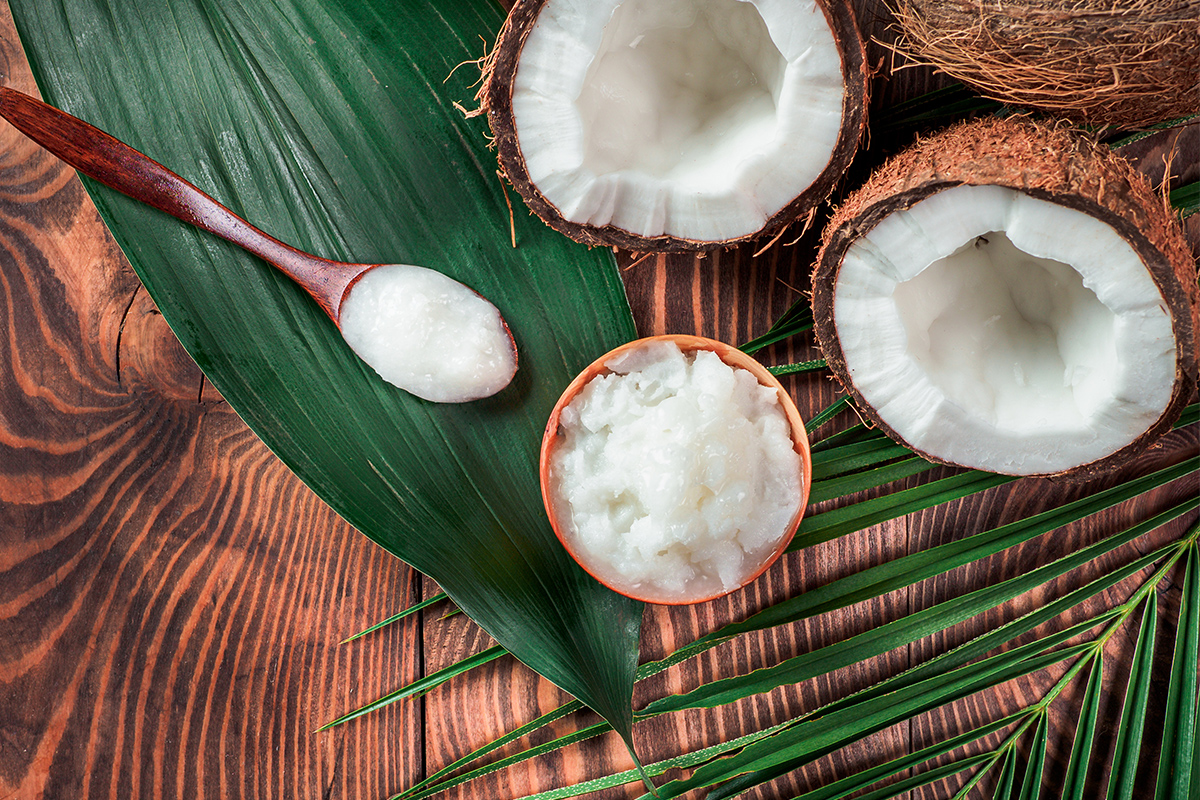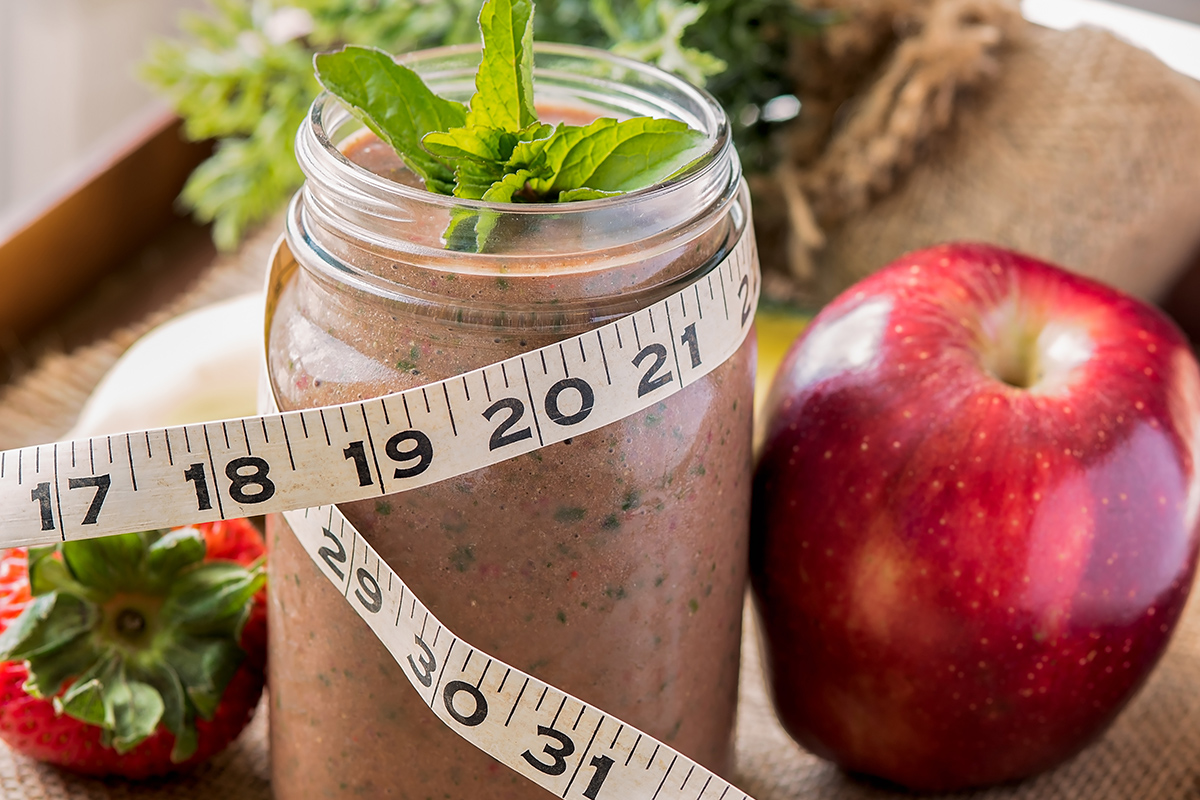Nutritious Green Foods You Didn’t Know About
Good nutrition is all about variety! Browse through our list of unusual fruits and veggies and give yourself a chance to try something new.

Evidence Based
There are a lot of reasons a person would consider exercising on an empty stomach. Many people simply like to exercise first thing in the morning. Then we have trending diet plans like Intermittent Fasting that make it difficult to schedule exercise around food consumption. Others incorporate fasting into their lifestyle for faith-based reasons. All the while, our exercise routines continue according to or despite our nutritional timing.
So, what happens when you exercise on an empty stomach? Is it good or bad for weight loss? Does it help you burn more fat or does fasting negatively impact your workout?
Let’s tackle these questions one by one. Here’s what you need to know if you’re considering working out while fasting:
When we say “fasting” we typically mean you’ve gone 8 to 12 hours without food. This would be like waking up in the morning after a good night’s sleep and deciding to work out before you have your first meal. If you participate in Intermittent or Prolonged Fasting, you may be going without (or with very little) food for 12, 16, 48, or even 72 hours.1 Here’s what’s happening in your body when you fast:
By 6-8 Hours – Your body is still burning through its glycogen supply.2 This is the most readily available form of energy.
By 12 Hours – You enter the metabolic state called ketosis in which your body begins to break down fat.1
By 18 Hours – You’re now in “fat-burning mode.” Your body is generating more ketones which tell your body to reduce inflammation and to make repairs to damaged DNA.1
By 24 Hours – Your body starts a process called autophagy. This means your cells work harder to recycle old components and to break down misfolded (damaged) proteins. Misfolded proteins are connected to Alzheimer’s and other diseases.1
If you’re interested in learning what happens once you hit 48, 54, and 72 hours of fasting, check out this article on the 5 Stages of Intermittent Fasting. For the purpose of this article, we don’t need to delve that far.

Now that we know what’s happening on a biological level while fasting, let’s take a look at what happens when exercise is added to the equation.
As you exercise, your body starts by using glycogen for energy. You typically have enough stored up to last you about 24 hours.3 If you manage to deplete your glycogen stores (say you’re an endurance athlete running a triathlon and you haven’t been replenishing your energy as you go), you’ll hit exhaustion. Your body still has plenty of energy stored as fat, why doesn’t it use it when glycogen levels are low?
The body is not adapted to this. However, it can be trained! Following a low-carb diet or exercising while fasting can teach your body to draw energy from your fat-stores.3 Before this all starts to sound too good to be true, let’s define what we mean by “drawing energy from your fat-stores.”
A terrific example by Dr. Jason Fung in his article on Fasting and Exercise, starts to illustrate this concept pretty well: Imagine that your glycogen supply is like energy stored in the refrigerator. It is ready to use but the supply is limited. Your fat is like energy stored in the freezer; it takes a greater process to make it usable but you can store a larger supply.
Over time, exercising while fasting increases the production of fat-metabolizing proteins.3 Our muscles essentially become more efficient at breaking down fat in order to use the energy. It’s all part of how the body adapts to its circumstances.

So, what does other research have to say about this? An article from the Strength and Conditioning Journal reviewed the results of multiple studies on the subject.
The review found that endurance trained individuals who performed moderate to high-intensity cardio (while fasting) break down significantly more fat than the body can actually use.4 So, yes, the body does break down that fat, but what isn’t immediately used goes back to its original form.4 The ultimate conclusion was that the net effect of exercising while fasting was negligible and may even have negative effects on muscle strength and growth.4
Another study examined body composition changes between a group that fasted before exercise and a group that did not. Their findings showed no difference between the two groups! They both lost significant amounts of weight and fat mass but fasting seemed to have no implication on the results.5
So, the evidence seems to lean in two directions. The body is clearly responding to the need for energy but there are split conclusions on whether this response is beneficial. Until more research is done, fasting before exercise may come down to a matter of preference. If you’re still seeking some answers and still interested in giving it a try for yourself, let’s find out a little bit more.

A study on exercising in the fasted state hypothesized that exercising on an empty stomach would increase calorie intake throughout the day. They were surprised to find that not only did their participants eat less, they were also more motivated to work out.6 These results are promising if you’re worried about your hunger causing you to overeat on days you both fast and exercise.

Well, it depends what you’re doing. If you’re working out on an empty stomach, keep in mind that your body has been running on its glycogen stores while you fasted. It will pull from those same stores when you exercise, at least until you run out. If you’re doing steady cardio, you’re likely to be just fine.
High-intensity exercises, however, rely on glucose for muscle contraction.7 If your energy stores are low because you’ve been fasting, your body might break down your lean muscle to get you through your workout.7 If you recall, this was the same concern that came up in the article from the Strength and Conditioning Journal.
Clearly, this subject merits further research before any definitive conclusions can be drawn. Evidence can be found to back both sides of the argument. Some athletes swear by it, and there is science to prove that something is in fact happening to release and utilize your fat stores, but is it all enough to make a difference and are there significant adverse effects?
With the research at your fingertips, it remains up to you to decide whether you want to fast or feast before your workout. Which do you prefer? Let us know in the comments below!
For more thought provoking posts, check out What Happens to Your Body When You Stop Working Out, or, read this post to debunk some big Muscle Building and Fat Burning Myths. To access our monthly blog post highlights, subscribe to our newsletter, today!

Nice Cream has gained popularity in the health food world over the last few years, and for good reason! As a dairy free, added-sugar free, vegan, and all-natural alternative to ice cream, it’s easy to see why.
Yes, we know it’s December, but is there ever a wrong time to enjoy nice cream? Besides, there are plenty of holiday foods this time of year that are anything but nice to your healthy eating efforts. It’s not a bad idea to have some healthy sweets in your freezer for the days when baked goods and buttery bread rolls are challenging you to a face-off.
So, what’s in this magical frozen delight? The answer is fruit! Plain, frozen fruit; typically, with banana as the base ingredient for that craveable creaminess.


The one thing better than the taste of fresh fruit in nice cream, is how easy it is to craft your own. There are almost no limitations to what you can create when all you have to do is freeze some fruit and blend it together! Any flavor combination in the world is open to you.
The process itself is really that simple. Now, depending on how creative you want to get, your flavor profiles can add some extra time and effort.
Here are some fun (and in-season) flavor combinations for you to try with your Nice Cream:

01.
Bananas, pumpkin puree, and some pumpkin spice give you this guilt-free treat. Feel free to add ingredients like Medjool dates for sweetness, and vanilla extract, cinnamon, or nutmeg to add some winter-time flare. Toppings like sunflower seeds or crushed almonds will also go nicely with these warm and spicy flavors.

02.
Clementines, Mandarins, and Tangerines are in season during the winter months. You may have heard them called by all these names but Clementines and Tangerines are really just classifications of Mandarin oranges. Match the tart orange flavors with some sweet pineapple or even strawberries, blueberries, and bananas to create a party of fruity flavors.

03.
This is a frosty take on the festive classic: apple pie. You may need some non-dairy milk to help the ingredients blend smoothly for this one. Feel free to experiment with the flavors of Flax milk, soymilk, walnut milk, almond milk, and others. All you need to add is banana, apple, cinnamon, and perhaps some vanilla extract to close in on that apple pie flavor. You can also substitute the apples for blueberries or cherries to achieve a different fruit pie profile.

04.
If we’re going for an apple pie flavor, we can’t leave out pecan pie! You’ll follow the same procedure of blending pecans into your frozen bananas, and you can add some dates to mimic the sweetness of caramelization. If you don’t want crunchy bits of pecan, blend them into a “butter” first, the same way you’d blend peanuts to make peanut butter. This will help them blend more smoothly with the rest of your nice cream.

05.
Cranberries are also very much in season and they can add a lip-smacking tart to your nice cream. Because of their tartness, it would be a good idea to add some sugar substitute to help sweeten this mix. Other fruits that pair well with cranberry include oranges, apples, peaches, and even pears. Again, blend your walnuts into a paste before adding them into your mixture. You can also add cinnamon, nutmeg, and cloves to give it the zing of seasonal spices.
For more happiness-inducing holiday treats, read our registered dietitian’s article on Nutritious, Mood Boosting Holiday Foods. To learn about fruit, its sugars, and the time of day to eat or avoid it, check out the answer to this reader’s question. To access our monthly blog post highlights, subscribe to our newsletter today!

Fat has long been regarded as the foe of the weight conscious, except for those on a ketogenic diet. The goal for keto diets is to consume enough fat to force the body into ketosis and use fat for fuel instead of carbohydrate (glucose). Can a supplement of a certain type of fat also promote a shift in body composition? Fingers point to MCT (medium chain triglyceride) oil as the magic bullet that can boost metabolism, burn fat and build muscle.
What a Triglyceride is: Most fats we eat are triglycerides which have three fatty acid chains (if you must know — one attached to each hydrocarbon of a glycerol backbone). Mainly we eat triglycerides with long fatty acid chains (12-18 carbons), which may be saturated or unsaturated. Short chain fatty acids (4 carbons), on the other hand, are predominantly produced by gut bacteria.
So, what exactly are MCTs? Medium chain fatty acids have 6-10 carbons in length. They are found in coconut (16%) and palm (8%) oils, and to a lesser extent in dairy products. When they are cleaved off and reassembled to glycerol in a lab — Voila! — a medium chain triglyceride (MCT) without long fatty acids is made. So isolated MCT isn’t found in nature but is man-made. MCT oils generally contain either caprylic acid (C8), capric acid (C10) or a combination of the two, and to a lesser extent, caproic acid.

MCTs are metabolized differently than the long chain triglycerides found in most foods. MCTs are digested more rapidly (and transported to liver for oxidation) than long chain triglycerides, which take longer to metabolize and get stored as fat in the process. Providing 10% fewer calories compared to other fats, MCT oil is a lactose-free, gluten-free, vegan, pareve rapid fuel. Weak evidence supports replacement of LCTs with MCTs for promoting weight loss while there’s insufficient research on other metabolic effects and Alzheimer’s disease.

Because it’s man-made and lacks long chain fatty acids found in natural foods, MCT oil does not provide essential fatty acids (linoleic an omega-6 fatty acid, linolenic an omega-3). Medium chain fatty acids are always saturated, a concern for cholesterol levels and heart health. Ingestion of large doses of MCT oil may cause significant gastrointestinal distress. As one major manufacturer indicates: “Use of MCT as part of a ketogenic diet requires medical supervision.” Supplementing can get costly with an average MCT oil price of $1 per fluid ounce, compared with coconut oil at 50¢ per fl. oz.
Doses of 5 to 48 grams per day (as much as 9 teaspoons) were shown in clinical studies to yield enhanced results. For best tolerance, start with 1 teaspoon (5 mL) 3 to 4 times a day. Slowly (over a week or more), increase to a maximum of 1 Tablespoon (15 mL) 3 to 4 times a day. Food products with MCTs will show “modified coconut and/or palm kernel oil (medium chain triglycerides)” in the ingredients list – check the Nutrition Facts panel for grams of saturated fat.

Don’t take MCT oil on an empty stomach. Like other oils, MCT oil may be mixed into beverages such as juice or milk, or into sauces, salad dressings, and other foods. Colorless, flavorless and odorless, MCT oil is easy to incorporate into dishes but won’t impart more taste. Because of its low smoke point, you shouldn’t cook with MCT oil in high heat. Wholesome fats for Keto diets include coconuts and unrefined coconut oil, avocados and avocado oil, nuts, nut and seed butters, flax seeds, hemp hearts, chia seeds, olives and cold pressed olive oil, cacao nibs, full fat Greek yogurt, fatty fish, whole eggs, butter, and cheese.
For a ketogenic diet that’s already based on an extremely high percentage of calories from fat, substituting MCT oil for other oils in cold food preparation may provide a slight body composition benefit. As an oral supplement, taking undiluted MCTs without food may not be tolerated. You’ll still need to incorporate healthy whole plant fats in your diet for essential fatty acids.
Sources

Counting calories during the holidays may as well be a task for only the mightiest among us. The effort either requires enormous willpower or a serious dislike for holiday dishes. Aside from the calories, however, the holidays are often a time when cooking and baking together is part of the joy of the season.
That is why we’ve scoured the internet to compile a list of holiday cookie recipes that are more merciful on your waistline than their classic counterparts. You’ll find that it is possible to enjoy the tastes of the season without succumbing to the siren call of comfy sweatpants.

01.
Recipe #1 – Vegan Peanut Butter Protein Cookies
This recipe by Chocolate Covered Katie is a no-bake take on classic peanut butter cookies! This version tosses the flour and substitutes it with protein powder! The addition of applesauce is a surprising twist, but, including it in the cookie “dough” ensures your cookies are moist and still sweet despite the reduced sugar content.

02.
Recipe #2 – Paleo Chocolate Snowball Cookies
Nothing says December like cold weather and snow-capped mountains. So, a natural season favorite would have to be Snowball Cookies! Arman Liew shares his festive recipe on The Big Man’s World. With only 4 ingredients, and no baking involved, you can see why this recipe is hailed as a simple yet delicious treat. No kitchen savviness required.

03.
Recipe #3 – Flourless Tahini Cookies
If you’re unfamiliar with Tahini, it’s a sauce or paste made from toasted sesame seeds. On its own, it can be somewhat bitter, though some people will eat it by the spoonful as a cough suppressant. Does it work? We’re not sure, but does it make some great cookies? Yes, yes it does. Try out this recipe by Jyothi on The Curry Trail and let us know what you think of this nutty, low-fat cookie!

04.
Recipe #4 – Low Carb and Sugar Free “Oatmeal” Cookies
With sliced almonds stepping in for oats, these “oatmeal” cookies are a low carb alternative to the real thing. The only actual oat component is some oat fiber which is added to give these cookies their texture. Recipe creator, Kim Hardesty, suggests substituting this ingredient for coconut flour if you want to go completely oat free. Check out her instructions on Low Carb Maven.

05.
Recipe #5 – Healthy Gingerbread Cookies
The holidays are not complete without the spicy snap of gingerbread cookies. Easy to make, fun to decorate, and delicious to share, this seasonal favorite now comes in a healthier recipe. You won’t find a trace of refined flour or sugar, or any butter (if you choose coconut oil) in these wintertime treats. You’ll also get some tips on how to get that perfect gingerbread man shape. The details are all here, on Amy’s Healthy Baking website.

06.
Recipe #6 – Gluten Free Paleo Coconut Cookies
These Coconut Cookies are Paleo friendly, vegan, gluten-free, and even dairy-free. This recipe calls for only 4 ingredients, but the secret to this baked good is in the technique, not in any secret ingredients or special substitutions. Demeter breaks down her process in a detailed step by step guide on Beaming Baker. Take a look!

07.
Recipe #3 – Flourless Tahini Cookies
We had to include a recipe that plays on the classic oatmeal raisin cookie. Naturally sweetened with honey and made with nutritious ingredients like oats, flaxseed, pumpkin seeds, and cranberries, these energy-packed cookies deserve more time in the day than just breakfast. Regina’s popular recipe can be found on Leelalicious.

08.
Recipe #8 – Skinny Snickerdoodles
We close off our list with another recipe by Chocolate Covered Katie because making snickerdoodles healthy looks like a tough undertaking, and this recipe looks just right. With different options for your flour and sweetener, and only a quarter cup of butter, skinny snickerdoodles look like a great addition to our holiday cookie list. Fill your kitchen with the smells of warm cinnamon and watch everyone within sniffing distance come by to investigate.
It’s okay to indulge in a few healthier snacks this season, and of course, moderation is key. Some treats, like dark chocolate and almonds, even have some health benefits. To keep from over-indulging, read our registered dietitian’s Super Snacking Guide for ideas on how to keep your snacking on the healthy side. To access our monthly blog post highlights, subscribe to our newsletter today!


Hello, I have breakfast (almond milk, walnuts, pecans, almonds, banana and oats) and dinner (salad of tomato, onion, potatoes, pepper, cilantro, rice puffs). Can I replace my everyday lunch with meal replacement shakes? I work out in the gym 3 times a week and run twice a week. I have been in good shape but can’t get a 6-pack. I would like to get there in 3 months before my vacation. Thanks in advance for your help.
-Dean

You certainly can replace your lunch with a meal replacement shake, although I don’t know if that would help you with your goal. Dinner already sounds super light and you’ve not described your current lunch so it’s hard to tell what’s missing from your day. The items you described are all plant-based so I’ll stick with like foods in recommending quinoa, cabbage, broccoli, asparagus, berries, flax & chia seeds, spinach, lentils, and green tea for your mid-day meal. It’s best to chew your calories, allowing your digestive system to do its job over time, thus allowing a slower uptake of energy than from a shake.
Be sure your workouts include lots of ab-defining exercises as highlighted elsewhere on our Living Healthy Blog.
Resources:
– Debbie J., MS, RD
This article should not replace any exercise program or restrictions, any dietary supplements or restrictions, or any other medical recommendations from your primary care physician. Before starting any exercise program or diet, make sure it is approved by your doctor.
Some questions have been edited for length and/or clarity.
 Have a nutrition question? Our registered dietitian is ready to help!
Have a nutrition question? Our registered dietitian is ready to help!
Email nutrition@lafitness.com or submit your question below and it may be featured in an upcoming article!
Good nutrition is all about variety! Browse through our list of unusual fruits and veggies and give yourself a chance to try something new.
Does liberally salting your food help you pump more iron in the gym? Registered Dietitian, Debbie James, investigates the claims!
One frequently asked question is about the recommended intake of protein. We hear you! Here is everything you need to know.
Be the first to know about exclusive
content, deals and promotions